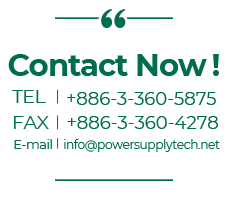HOME > Q & A
Q & A
-
What is UL certification?
English is Underwriters Laboratories UL (Underwriter Laboratories Inc.) Shorthand. UL safety
test of America's most authoritative, but also engage in safety testing and identification of
large private institutions. It is an independent, non-profit, do testing for public safety
professional organizations. It uses scientific testing methods to study identified a variety
of materials, devices, products, equipment, construction of life, property damage and
whether the extent of harm; determined to write, issue the appropriate standards and help
reduce and prevent life loss of property information, while carrying out the facts research
business. In short, it is mainly engaged in product safety certification and safety certificate
to operate the business, with the ultimate aim is to market a considerable level of product
safety for human health and property is guaranteed to contribute. Product safety
certification as to eliminate technical barriers to international trade an effective means, UL,
to promote the development of international trade also played an active role.
UL was founded in 1894, the initial phase of UL Fire Lord in the insurance sector by
providing funds to maintain the action until 1916, UL was completely self-sustaining.
After nearly a century of development, UL has become a world-known certification body,
its own set of strict management system of the organization, standards development and
product certification procedures. UL by a security experts, government officials, consumers,
education, utilities, insurance and standards department council composed of
representatives of management and daily work by the president, vice president handling.
Currently, UL has five laboratories in the United States, headquartered in Northbrook town
north of Chicago, while Taiwan and Hong Kong were set up appropriate laboratory. -
What is ROHS certification?
EU ROHS certification - Restriction of Hazardous Substances Directive.
EU ROHS certification (Restriction of Hazardous Substances Directive) has been scheduled for
July 1, 2006 implementation, since that date, all electrical and electronic equipment sold in Europe
of restricted hazardous substances must comply with the stringent requirements of Directive .
The Directive stipulates that the European sales of electrical and electronic products, lead Pb,
cadmium Cd, mercury Hg, hexavalent chromium Cr6 +, PBBs PBBs, PBDEs PBDEs six hazardous
substances be restricted after more harmful substances will also be restrictions.
RoHS certification covers the range of AC1000V, DC1500V following directories listed by the electronic
and electrical products:
1. A large household appliances: refrigerators, washing machines, microwave ovens,
air conditioners and other.
2. Small household appliances: vacuum cleaner, iron, hair dryer, oven, watches, etc.
3. IT and telecommunications equipment: computers, fax machines, telephones, cell phones, etc.
4. Civilian devices: radios, televisions, video recorders, musical instruments, etc.
5. Lighting: In addition to household fluorescent lighting outside, lighting control devices.
6. Power tools: drills, lathes, welding, spray, etc. (to be installed except for large-scale industrial tools).
7. Toys / entertainment, sports equipment: electric cars, video game.
8. Medical devices: radiation therapy, ECG testing, analysis equipment, etc.
9. The monitoring / control devices: smoke detectors, incubators, plant monitoring and control machines.
Which, RoHS Directive currently applicable 8,9 two.
RoHS certification (2002/95/EC) on the maximum allowable concentration of harmful substances
(threshold): Cd threshold of 100ppm; Pb, Hg, Cr6 +, PBB, PBDE threshold 1000ppm; their testing
method also requires countries to coordinate. -
What is CE certification?
What is CE certification?
CE is written in French, English meaning "European Conformity the European Community.
"CE" is the French "Conformit é Europ é ene" acronym, meaning "in line with European (standard)."
"CE Marking", namely the CE mark, European Union, signed in 1993 Products Directive 98/68/EEC
was formally proposed, CE mark to become the EU unified compulsory product certification mark.
In other words, there is no CE mark, it can not enter the EU market.
Apply the CE mark signifies that the manufacturer declares: This product complies with European
health, safety, environmental and consumer protection laws and other relevant provisions of the basic
requirements (in practice, these laws make more directive approach to product release) . CE mark is
applied to products that can legally enter the EU single market and free circulation within the EU
single market.
European Economic Area, the European Union, the European Free Trade Association countries
(except Switzerland). Before the implementation of the CE mark, the EC countries on imports and
sales requirements are different, it is easy to form barriers to trade between them, hindering economic
integration process. In accordance with the EC May 7, 1985 in (85/C136/01) number "technical
coordination and standards for new methods of resolution" (New Approach Directives), CE mark
came into being.
EU technical information:
1 voltage is 230V / 50Hz.
2 plugs are Class I and Class II two kinds.







 Q & A
Q & A
